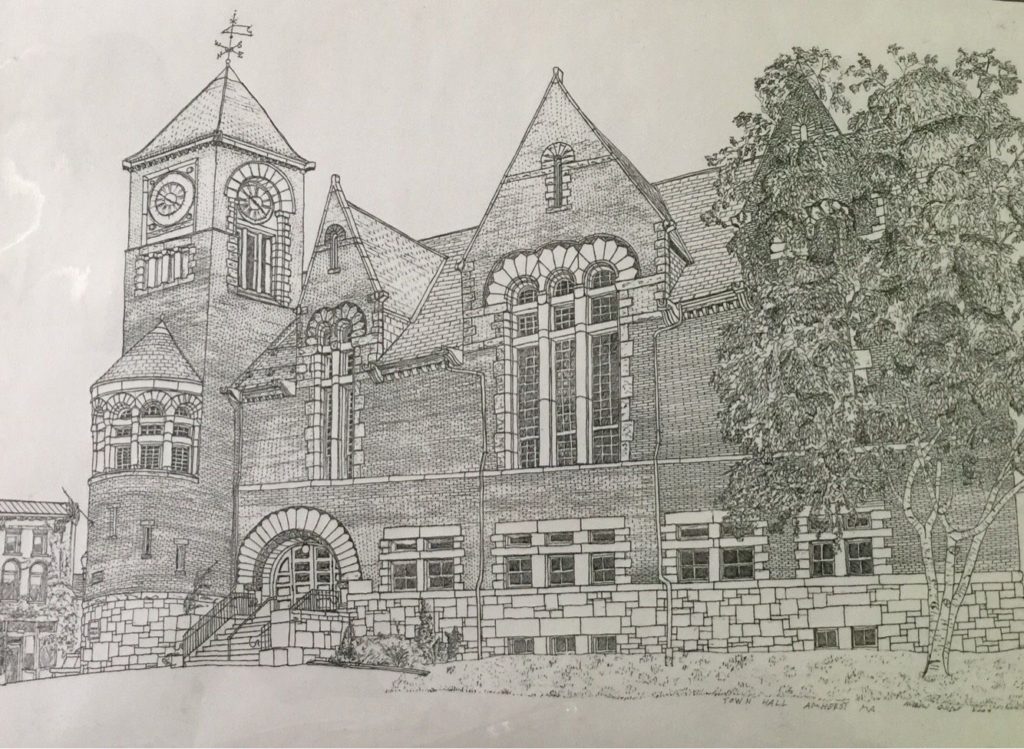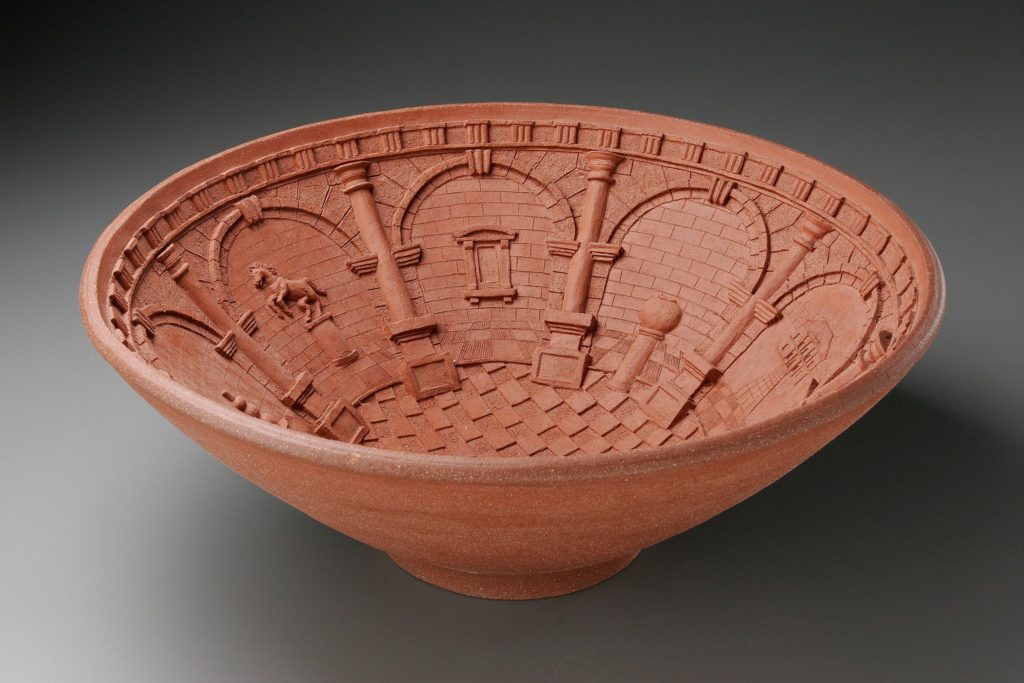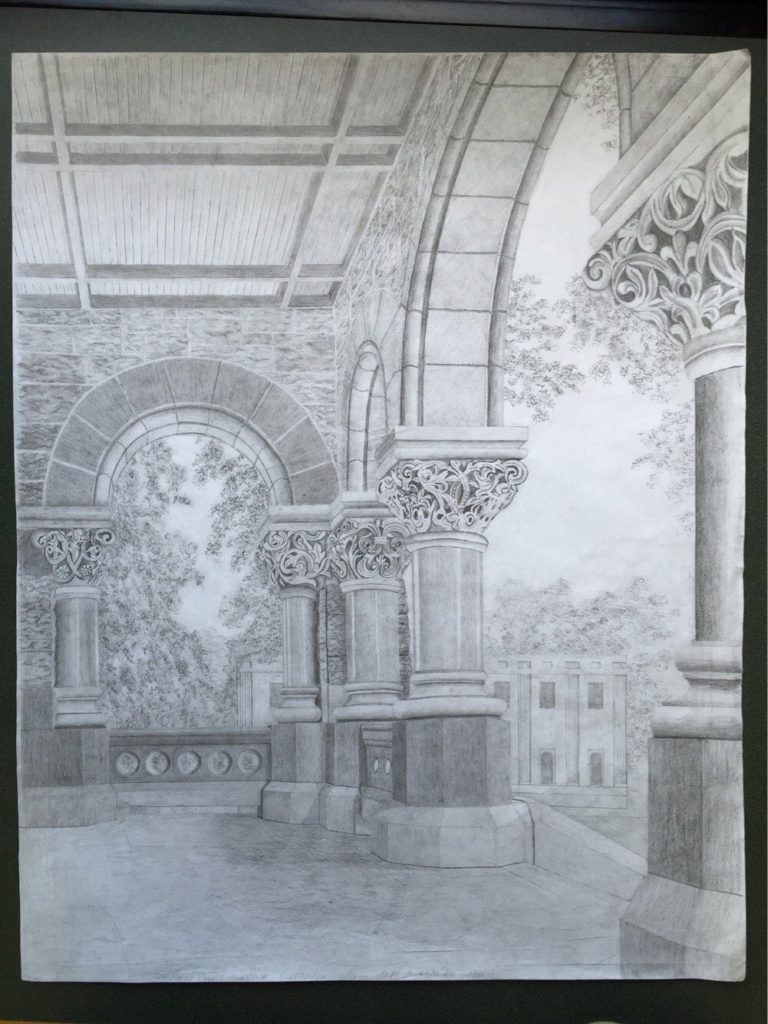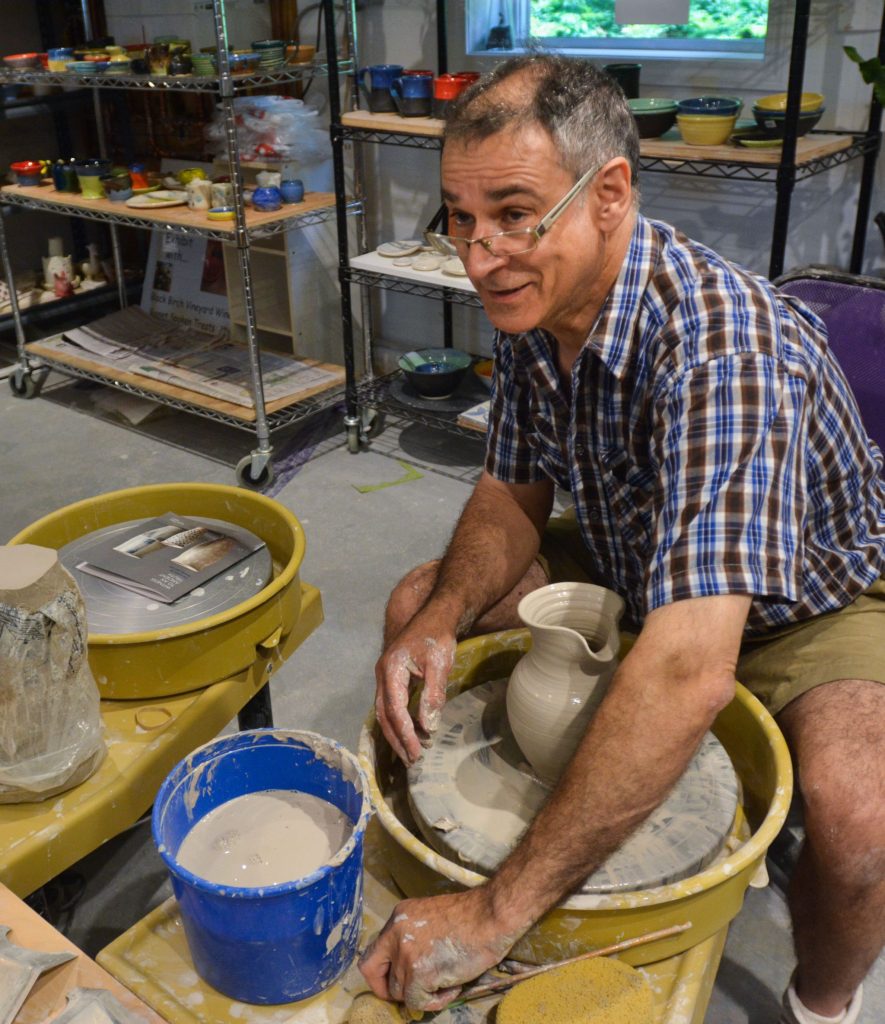Andrew Quient is celebrated for his geometrical-style pottery. Quient, 66, of Florence, even has some of his pieces in the national White House archives. But if you run into him working in Northampton, it’s unlikely he’ll be at a potter’s wheel. You’re probably going to find him at Forbes Library painstakingly drawing exact architectural pencil sketches of buildings he finds interesting and beautiful. Because not every building is worthy of record. The modern, no-frills box aesthetic of today’s buildings is just insulting.
“Go up King Street [Northampton] to Mcdonald’s and Burger King and what you have is buildings that are isolated, assertive, egotistical objects that have nothing to do with, or no respect for, their surroundings,” Quient says.
“Designs now are just pragmatic … There is no respect to formalism, meaning the building as a work of art.”
Pottery brought him fame, but it’s architecture that he’s most passionate about now. Quient happily spends up 100-plus hours drawing buildings that he finds to be important. Whether the importance is in the high quality and detail or the history of the building itself, Quient aims to preserve and celebrate the building through his drawing.
Quient actually moved to Northampton from New York in 1999 due to the high amount of notably rich buildings built in the late 19th century. Architecture drawing is one way to preserve these buildings and their history.
The drawings detail a dying breed of buildings. Buildings that are costly, yet decorated with extravagant designs and materials inspired by ancient Greek and Roman architecture. According to Quient, historically architecture drawing has been used by the Romans to dissect, understand, and reverse engineer the building technology in order to rebuild and improve the designs themselves. A building alone is an art in itself that can be strongly understood through the art of drawing a building, an art that Quient sees thinning out.
“There is a governing intelligence behind how a building is laid out. There is a geometry that determines what goes on in spaces,” he says. “And that’s now lacked.”
Architecture drawing and pottery have a lot in common, Quient says, and people who do one art form often do the other. There is a similarity between the feeling of building and designing a small 3D clay structure and drawing one on paper, he says.
Quient compares architecture drawing to actually building a structure — pushed onto a 2D surface; he starts from the bones and moves out to the exterior. Spending as much time as possible on-site, Quient says he will sit in front of the building and draw its dimensions and the beginning components of the structure. If he doesn’t have a strong understanding of the building’s lay out, the drawing will suffer greatly in quality and detail.
No longer in a studio after selling his spot in Haydenville in 2014, Quient continues his work from a long table at the Forbes Library in Northampton. Quient likes to work at the library as Forbes itself is a magnificent building featuring fine stonework, arched doorways and large open spaces suitable for studying and work. As a plus, Quient enjoys the pleasant distraction of running into friends at the public space and taking the moment to chat.
Quient gets to work with his pencil and straightedge among the people quietly studying and discussing with one another at the surrounding tables. There is not much involved with his work once he gets to the table, no fancy computer programs or tools. His workspace is just his large black portfolio, filled with pieces the size of my torso, the portfolio taking half of the table and the piece he is currently working on taking the other half. Pencils, paper, a drawing compass and the image of the building he is drawing is all that he needs. Quient’s pencil drawings are usually large at about 18×24 inches and can take up to 120 hours , which requires diligence and intense attention to detail.
It was at art camp that a teenage Andrew Quient discovered his interest in pottery. Pottery is a hands-on art form that requires you to get your hands dirty, something Quient liked. But he was worried pottery wouldn’t pay the bills so he went to Architecture School in Syracuse in 1974 where it was necessary for Quient to learn how to draw. After graduation he decided architecture wasn’t for him and he went back to pottery and teaching the artcraft.
Although Quient’s passion is the arts, his focus is now shifting onto passing his knowledge to students. “Having been a potter and a teacher and a businessman for many years, I am now reshaping things,” Quient added. “I still am all those things, but it’s time for me to be focused on passing on what I know.”
Chance Viles can be contacted at cviles@umass.edu.






